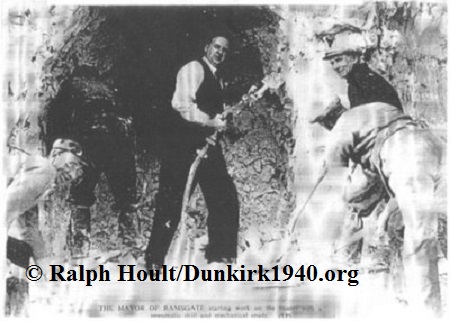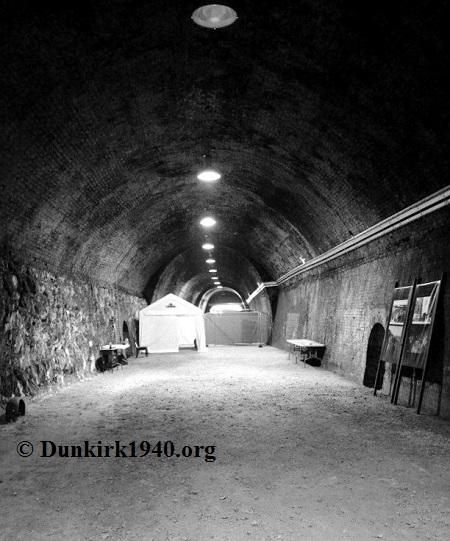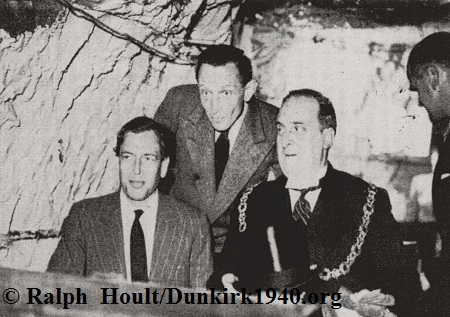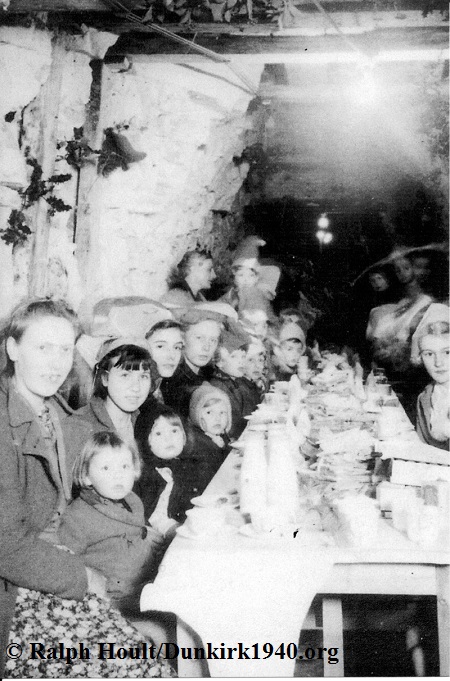As early as 1936, Ramsgate councillors had been agitating for the provision of suitable air raid shelters to protect the local population. However, central Government policy and lack of budget meant that no tangible progress was made. Undaunted, over the next two years, Mr R D Brimmell BSc, AMICE, the Ramsgate Borough Engineer, continued working on detailed plans for an extensive system of underground shelters.

During 1938, notwithstanding the obvious threat of war, the Home Office rejected two further requests. A third attempt in March 1939 was finally successful, but only after the personal intervention of the Lord Mayor of Ramsgate, Alderman A B C Kempe and the local MP, Captain H H Balfour. The small matter of the German invasion of Czechoslovakia might also have concentrated minds in the Civil Service!

Within a month, tenders for the works had been received and approved and work started immediately on the new tunnel complex. The principal galleries ran from the Western Undercliff, under Addington Street, to the junction of West Cliff Road, with a spur tunnel to Ramsgate Hospital. From there, the tunnel followed the route of Marlborough Road, North Avenue to Cannon Road (with a spur tunnel following Ellington Road and into Ellington Park), Eagle Hill, Chatham Place, Boundary Road and Victoria Road where it joined the old railway tunnel running from Dumpton to the East Cliff at Ramsgate. The railway tunnel was incorporated into the wider scheme. Official entrances were created at over a dozen points around the tunnel system to provide local people with easy and swift access.

The construction of the tunnel system was greatly aided by the fact that the town sits on a deep layer of chalk, which is relatively easy to tunnel and is stable when correctly cut. With a workforce numbering 80 men, working 24 hours a day, the rate of progress of the tunnelling operation was impressive at around 7-8 metres per day. The first 400-metre section from the Harbour to Queen Street was completed within two months and was opened by the Duke of Kent on 1st June, 1939.

Recesses were quarried into the tunnel walls to provide sleeping accommodation, toilets and First Aid posts. The deep shelter's lighting was linked to the town's electrical system, with emergency back-up provided by batteries. One extremely clever design feature was that the tunnels were built on a 1:600 gradient. As the system was continually rising, it created a natural flue effect and was thus self-ventilating.

By the end of 1940, the deep shelter system consisted of over three miles of tunnels. Together with the town's 170 reinforced basement shelters, large numbers of Anderson and Morrison shelters and a number of caves and re-opened shelters of WW1 vintage, Ramsgate could arguably boast the best and most comprehensive air-raid shelter system in Britain. During WW2, the shelters were responsible for saving many lives and keeping casualty figures, in one of the most vulnerable areas of the country, to modest levels.

Thanks to the efforts of local volunteers, guided tours of part of the deep shelter complex have been available to the public since 2014.
Back
